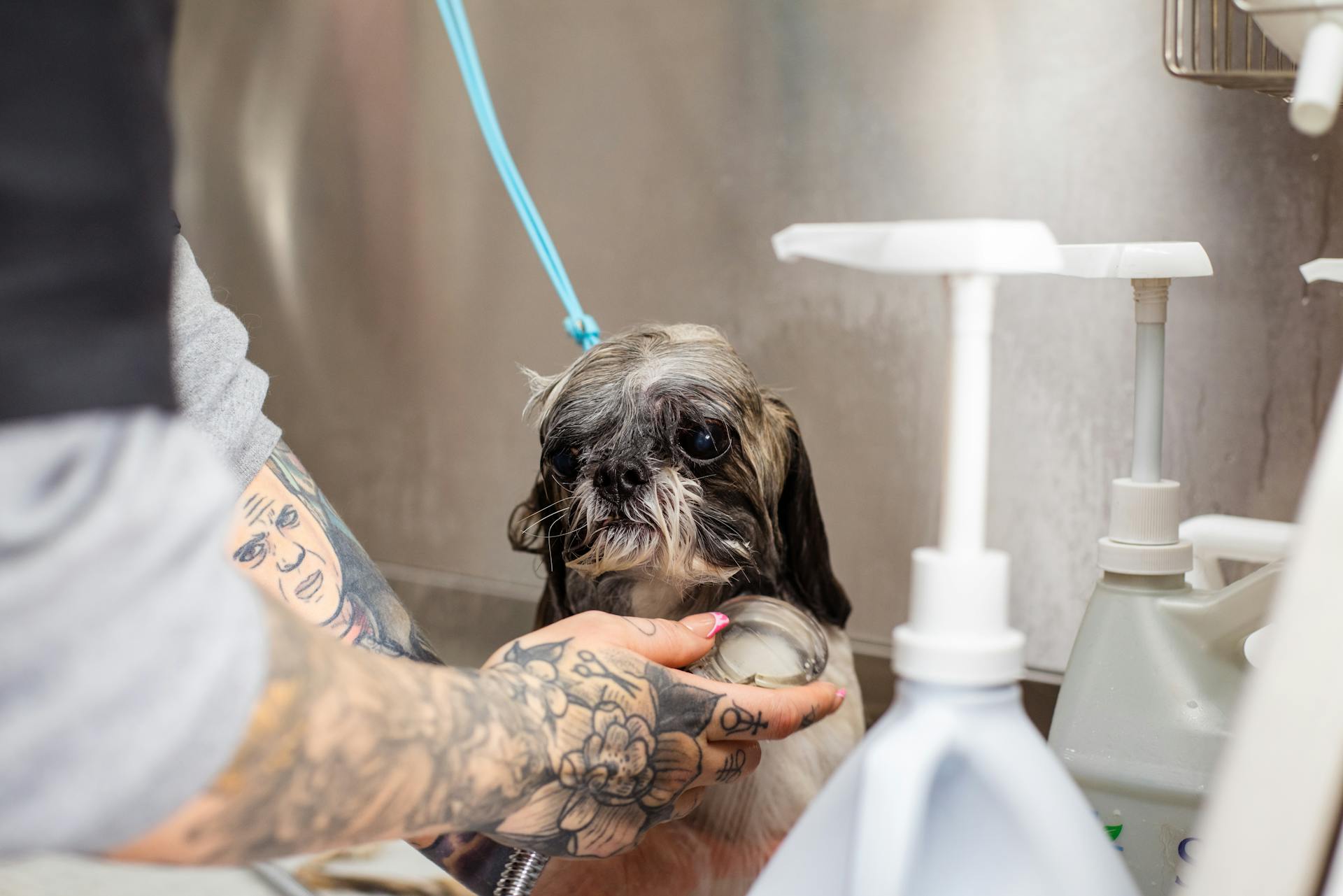
Dog scooting after grooming can be a frustrating and embarrassing issue for many dog owners.
It's estimated that up to 50% of dogs will exhibit anal gland issues at some point in their lives.
Anal glands are small sacs located on either side of a dog's anus that produce a pungent secretion to mark their territory.
Grooming can sometimes cause irritation and discomfort in these glands, leading to scooting behavior.
Dogs will often drag their rear ends on the ground to try to relieve the pressure and discomfort caused by impacted anal glands.
Regular anal gland expression by a veterinarian or experienced groomer can help prevent scooting and other anal gland-related issues.
A different take: Female Dog Scooting
Anal Gland Problems
Dogs often scoot after grooming because of anal gland problems, which are the most frequent cause of this behavior. Anal gland problems can be quite uncomfortable.
Anal glands are small sacs located on either side of your dog's anus, containing a foul-smelling fluid that's expressed during bowel movements. This fluid helps mark your dog's territory.
However, when anal glands become impacted or infected, they can cause significant discomfort for your dog, prompting them to scoot in an attempt to relieve the discomfort.
Recommended read: Dog Grooming Express Glands
Prevention and Relief
To prevent your dog from scooting after grooming, you'll want to keep their anal area clean and dry.
A Calendula compress is beneficial if you notice a tiny injury around the anus that is causing the scooting.
Calendula has anti-inflammatory and weak antimicrobial properties that accelerate wound healing.
It's essential to be gentle when cleaning your dog's anal area to avoid causing irritation.
However, Epsom salt compresses and baths have little proof of helping a dog in pain.
Curious to learn more? Check out: My Dog Keeps Licking Her Private Area after Grooming
Frequently Asked Questions
When should I worry about dog scooting?
If your dog scoots for more than a few days, it's a good idea to schedule a vet visit to rule out underlying issues. Persistent scooting can be a sign of anal gland problems or intestinal parasites.
Why does my dog keep sitting down suddenly after grooming?
After grooming, your dog may sit down due to feeling tired or relaxed, or adjusting to changes in their appearance and sensation. This behavior is a normal response to the grooming process, but if it persists, consult with a veterinarian to rule out any underlying issues
What is the cure for scooting in a dog?
The cure for scooting in a dog typically involves treating the underlying cause, which may include expressing anal sacs, administering antibiotics, increasing dietary fiber, or applying warm compresses to reduce swelling and pain. Treatment may also involve lancing or flushing the sacs under general anesthetic if necessary.
What is post-grooming furunculosis?
Post-grooming furunculosis is a deep skin infection that can occur in dogs, typically on their backs, due to bacterial contamination from grooming products or water. It's often caused by Pseudomonas aeruginosa, a common waterborne bacteria.
Sources
- https://www.thesprucepets.com/home-remedies-for-dog-scooting-7254448
- https://www.petmd.com/dog/symptoms/dog-scooting
- https://www.natural-dog-health-remedies.com/dog-scooting.html
- https://www.vetniquelabs.com/blogs/news/home-remedies-for-dog-scooting
- https://pawsafe.com/blogs/dog-healthcare/home-remedies-for-dog-scooting
Featured Images: pexels.com


